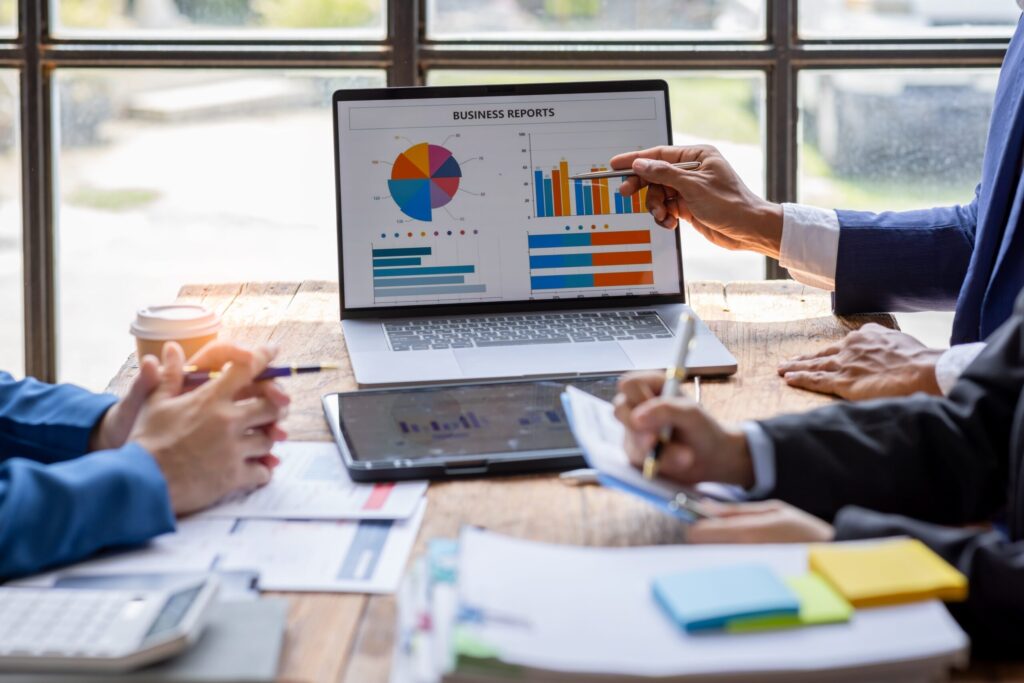|
Getting your Trinity Audio player ready...
|
Gold and silver have long held a significant place in the financial world. Their market cycles often reflect broader economic trends, impacting everything from stock markets to inflation rates. Understanding the cycles of gold and silver can help investors make informed decisions and potentially maximize their returns.
Over the past few decades, gold cycles have shown certain patterns, often linked with bear markets and recessions. For example, significant cycles occurred from 2001 to 2007, 2008 to 2011, and 2018 to 2020. These cycles typically see gold outperforming risk assets such as stocks and commodities, especially during economic downturns.
Silver, often moving in tandem with gold, has its own unique dynamics. The silver market’s cycles can be influenced by industrial demand, in addition to its status as a precious metal. As economic conditions shift and investor sentiment changes, staying informed about these market cycles becomes crucial.
Key Takeaways
- Gold cycles often coincide with economic downturns.
- Silver prices are influenced by both industrial demand and precious metal trends.
- Recognizing market cycles aids informed investment decisions.
Historical Context of Gold and Silver in the Market
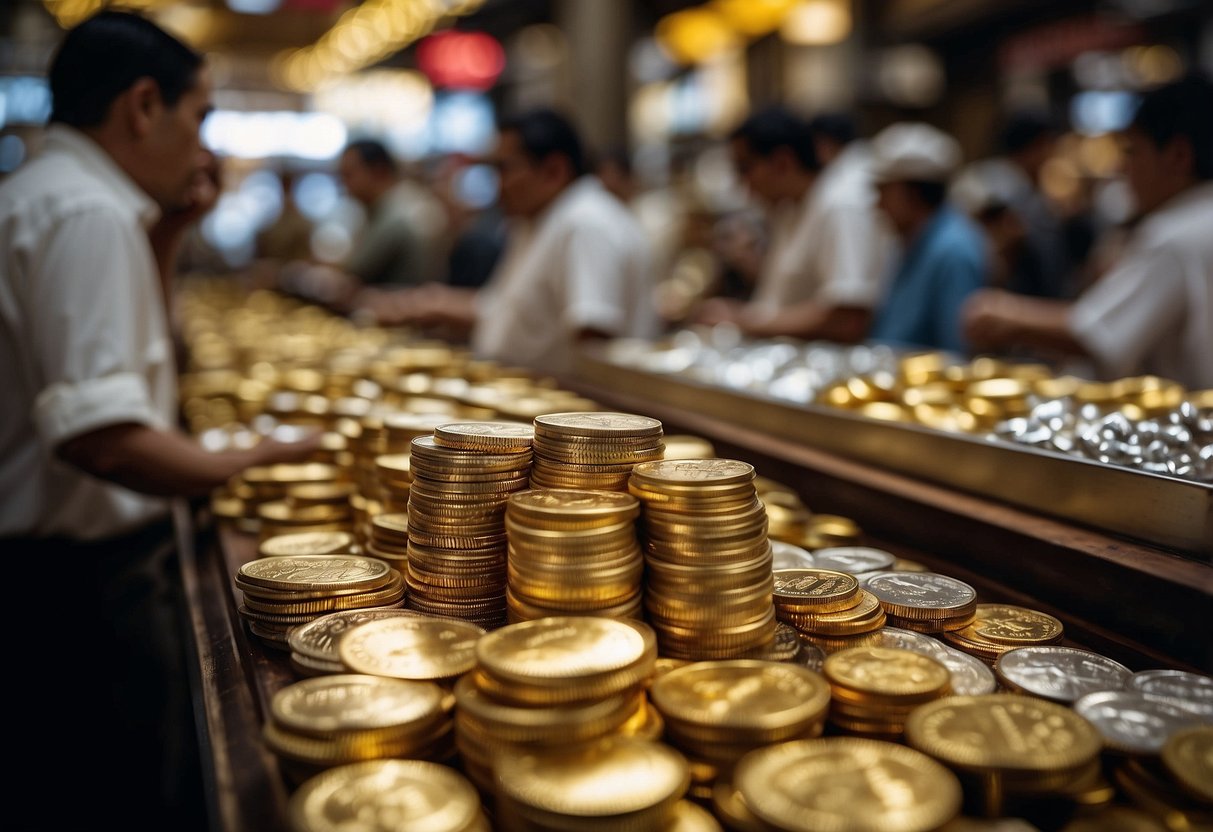
Role of Gold and Silver as Commodities
Gold and silver have been valuable for centuries, serving as a store of value and a medium of exchange. Gold, in particular, became central to many economic systems due to its rarity and durability. The introduction of the gold standard in the 19th century tied currency values to gold prices, impacting global trade and economic stability.
During periods of economic recession, gold often sees increased demand as a safe-haven asset. Silver, while also valuable, has more industrial uses, affecting its price movements differently from gold. For instance, increased industrial demand can lead to higher silver prices independently of gold.
Comparison of Gold and Silver Cycles
Gold and silver follow distinct market cycles shaped by varied factors, including economic trends and investor sentiment. The gold-silver ratio is a key indicator, which has fluctuated significantly over time. In the 20th century, the gold-silver ratio averaged around 47:1 but varied between 50:1 and 70:1 in the 21st century. In 2018, it even went above these levels, showing the shifting dynamics of these metals.
Periods of bull markets in gold often coincide with economic uncertainty and inflation, as seen during the 1970s when gold prices surged due to high inflation rates. Silver, with its dual role as both a precious and an industrial metal, can experience different cycles. For example, from 2001 to 2011, gold and silver prices increased dramatically, with gold rising by 528% and silver by 806%.
Fundamentals of Market Cycles

Defining a Market Cycle
A market cycle is a period during which a market undergoes a rise and fall in value before returning to its starting point. It includes both bull and bear markets, reflecting the general trend of the economic cycle.
Bull markets are characterized by rising asset prices and investor optimism. During this time, stocks and commodities like gold and silver often see higher demand. Conversely, bear markets involve declining prices and investor pessimism. Understanding these cycles is crucial for long-term investment strategies.
Market cycles vary in length, sometimes lasting a few years or decades. They encompass phases that investors must recognize to maximize returns and minimize losses. Both external factors, like economic policies, and internal factors, like market sentiment, drive these cycles.
Phases of Market Cycles
Market cycles consist of several distinct phases. The accumulation phase occurs after a market hits its lowest point. Here, savvy investors start buying undervalued assets. This is followed by the markup phase, where market momentum grows, and asset prices rise significantly.
Next is the distribution phase. In this phase, experienced investors begin selling their overvalued assets, anticipating a downturn. The last phase is the markdown, where asset prices decline, marking the start of a bear market. Finally, the cycle restarts as prices bottom out and accumulation begins again.
Each phase impacts different asset classes, including stocks and commodities like gold. Recognizing these phases allows investors to better time their market entries and exits, thereby optimizing their portfolios based on the economic cycle’s predictable patterns.
Economic Indicators and Their Impact

Interest Rates and Precious Metals
Interest rates directly influence the price of gold and silver. When interest rates rise, the appeal of holding non-yielding assets like gold decreases. This is because investors can earn more from interest-bearing assets. Conversely, low interest rates reduce the opportunity cost of holding gold and silver, often leading to increased demand.
Real interest rates, which factor in inflation, are particularly important. When real interest rates are negative or low, gold and silver become more attractive as they tend to preserve purchasing power better than cash. Monitoring central bank policies can help predict movements in interest rates and their potential impact on precious metals.
Inflation and Purchasing Power
Inflation erodes the purchasing power of money, making gold and silver attractive hedges. As inflation rises, the value of fiat currencies typically declines, driving investors to seek assets that hold value over time.
Gold is often seen as a safe haven during inflationary periods. When consumer prices increase, the demand for gold and silver usually rises as well. This trend is evident when there are sharp spikes in inflation data. For example, historical data shows increased gold purchases during periods of high inflation.
Understanding the relationship between inflation and metal prices helps investors make informed decisions. This knowledge is vital for maintaining the value of their investments in fluctuating economic conditions.
Unemployment and Market Sentiment
Unemployment rates are closely related to market sentiment and economic stability. High unemployment often leads to economic uncertainty, which can boost demand for safe-haven assets like gold and silver.
When unemployment rates increase, consumer confidence typically declines. This often results in a conservative investment approach, with more funds being allocated to stable assets. Thus, during periods of high unemployment, the prices of gold and silver can remain resilient or even rise.
Economic reports on employment can provide valuable insights. Investors watch these indicators to assess market sentiment and adjust their portfolios accordingly, aiming to balance risk and return efficiently.
Gold and Silver Demand Dynamics
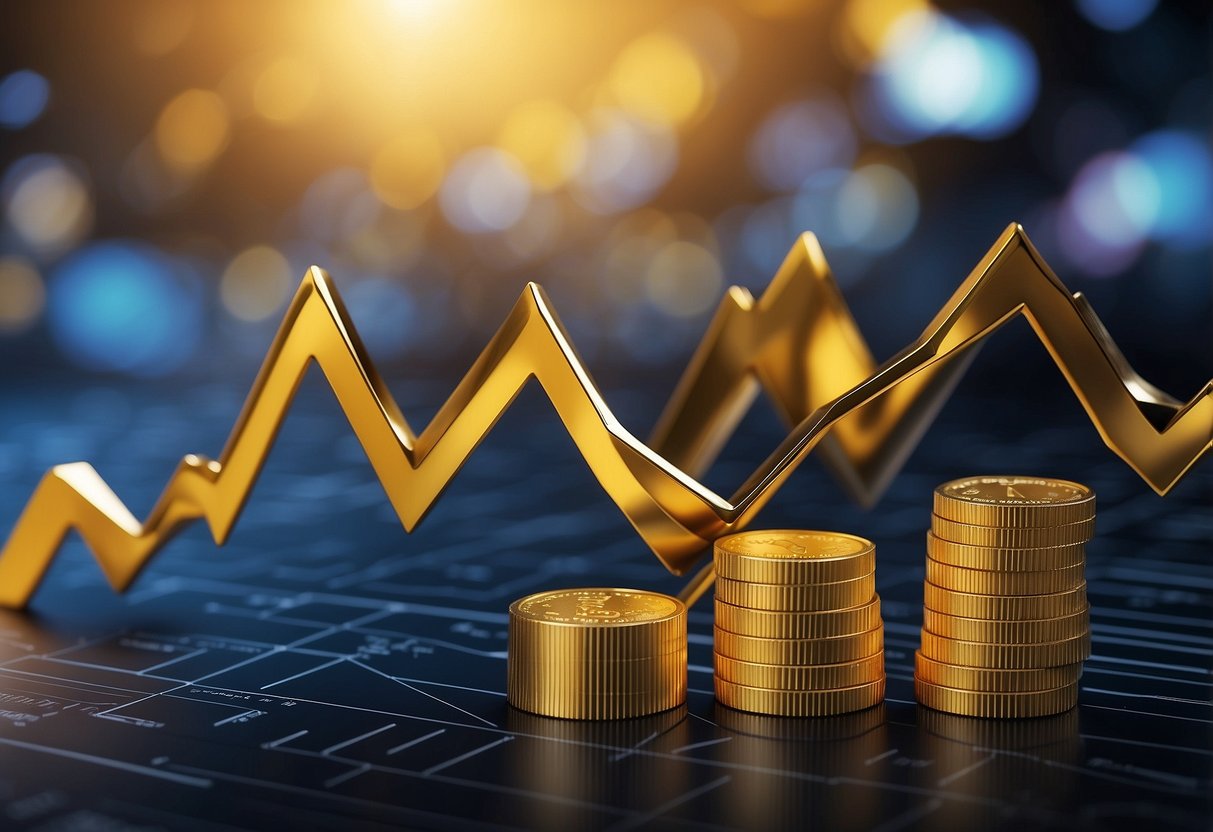
Supply and Demand Factors
Gold and silver prices are closely related to their supply and demand. When supply is limited, prices tend to rise. A strong demand can also push prices up even when supply remains steady. Economic conditions play a significant role.
For example, in bad economies, demand for gold generally increases as people consider it a safe investment. Conversely, if new gold mining increases, gold prices may decrease. Similarly, silver demand varies but often mirrors gold. Silver has the added factor of industrial use which can affect its price differently depending on technological advances.
Understanding these supply-demand dynamics is crucial for investors. Increasing mining production can lead to price drops, while higher demand can drive prices up, creating a delicate balance.
Jewelry, Investment, and Industrial Uses
Gold is a popular choice in jewelry due to its luster and rarity. About 50% of global gold demand comes from jewelry. In contrast, silver is also used in jewelry but to a lesser extent due to its lower value.
Gold often serves as an investment in times of economic uncertainty. Investors buy gold to diversify portfolios and protect against inflation. Silver is similar but has less stability and higher volatility.
Moreover, silver has significant industrial use. It’s found in electronics, solar panels, and other technologies. This industrial demand can greatly impact silver prices, sometimes even surpassing the influence of jewelry and investment demand.
Effective utilization of these metals in different sectors shapes their market cycles, demonstrating why understanding usage is paramount for market predictions.
Financial Policies and Their Effects on Metals
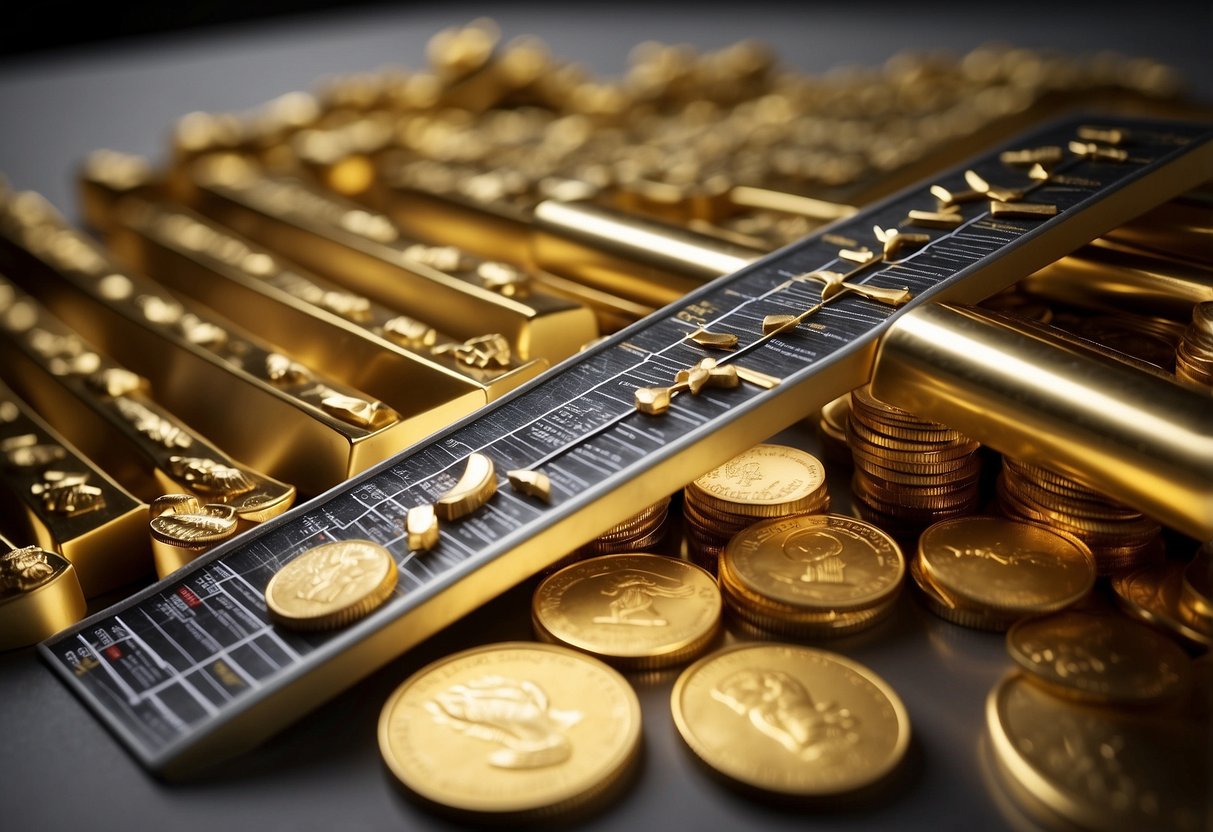
Central Bank Policies and Effects on Gold
Central banks can influence gold prices through various monetary policy tools. When central banks acquire gold, it can signal a hedge against financial instability or geopolitical tensions. This often leads to an increase in gold prices. Additionally, policies aimed at controlling inflation often impact gold’s appeal as a safe-haven asset.
During periods of high inflation, gold is typically seen as a store of value. Central banks might increase their gold reserves to protect against currency devaluation. This action can drive up demand, making gold more expensive. Conversely, when central banks sell gold, it may indicate confidence in the economy, potentially lowering prices.
Interest Rate Cuts and Commodity Prices
Interest rate cuts have a direct impact on commodity prices, including precious metals like gold and silver. When central banks cut interest rates, borrowing becomes cheaper, encouraging investment in commodities. This can lead to higher gold prices as investors seek better returns compared to low-yield bonds or savings accounts.
A dovish monetary policy, characterized by lower interest rates, often puts upward pressure on gold prices. Lower rates decrease the opportunity cost of holding gold since it doesn’t produce interest. This makes gold a more attractive option during times of low interest rates, boosting its price.
In summary, actions by central banks such as adjusting interest rates and managing gold reserves play critical roles in determining the prices of precious metals. These policies can either enhance or diminish gold’s appeal as an investment, significantly influencing market trends.
Trading Strategies for Gold and Silver
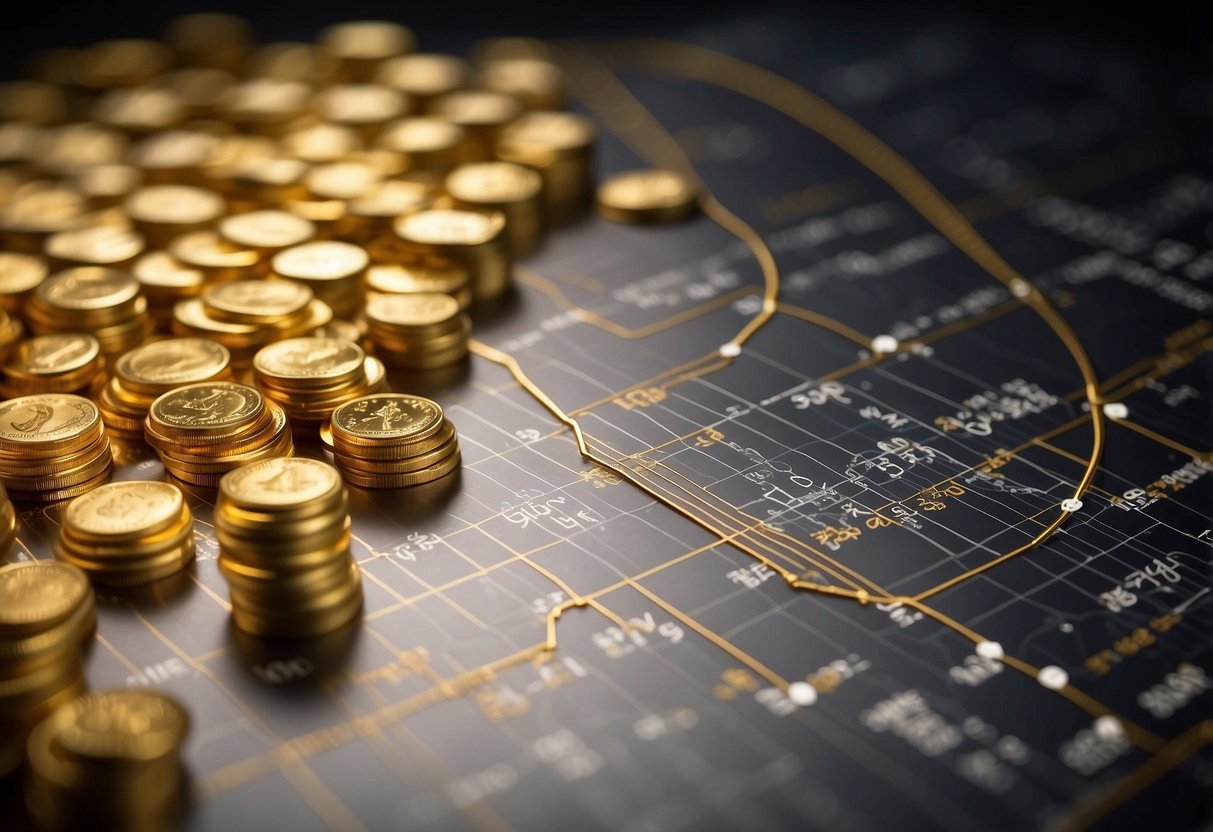
Analyzing Market Signals
Traders should pay close attention to the gold-silver ratio. This ratio indicates how many ounces of silver are needed to buy one ounce of gold. When the ratio is high, gold might be overvalued compared to silver. Conversely, a low ratio suggests gold is cheap relative to silver. Analysts use historical data to predict future movements, guiding traders whether to buy or sell.
Another key signal is market sentiment. During economic crises or political instability, gold often sees increased demand because it is viewed as a safe asset. This can cause fluctuations in silver prices as well. By studying these signals, traders can better time their entry and exit points.
Strategic Buying and Selling
Strategies for buying and selling gold and silver include setting clear price targets and utilizing stop-loss orders. Traders often go long on silver when the gold-silver ratio is historically high, expecting the ratio to normalize. When both metals are in an uptrend, they may opt to buy silver as it could offer more significant returns than gold.
Conversely, shorting gold might be advisable if the ratio is high, and market trends indicate a potential decline in gold prices. Profits depend heavily on timing, making it crucial to monitor relevant news and market trends. Traders can maximize nominal performance by leveraging tools like moving averages and trend lines.
Hedging Economic Risks
Gold and silver can serve as hedges against economic risks such as inflation and currency devaluation. During times of high inflation, the value of currency drops, but gold and silver typically hold their value better. Traders holding these metals can cushion against the adverse effects of inflation.
Hedging can also involve diversifying portfolios. By including both gold and silver, traders spread risk. In economic downturns, the prices of these metals often remain stable or increase, providing a safer investment compared to more volatile assets. This approach ensures better risk management and stabilizes overall returns.
Understanding these strategies allows traders to navigate the market more effectively and make informed decisions that align with their financial goals.
Influence of Geopolitical Events

Recessions and Global Crises
During recessions and global crises, gold and silver often become safe-haven assets. Economic downturns increase demand for these metals as investors seek to protect their wealth from unstable financial markets. The 2008 global financial crisis, for example, led to a surge in gold prices as confidence in risk assets dwindled.
Political instability also drives up gold and silver prices. Conflicts, wars, and trade disputes create uncertainty, causing investors to seek stable assets. For instance, escalating trade tensions between major economies have historically led to increased demand for gold.
Economic expansions and central bank policies like tightening can also influence precious metal prices. During periods of economic growth, the demand for industrial uses of silver may increase while gold might see reduced demand as investors favor higher-yielding assets.
Market Volatility and Metals
Market volatility often spikes due to unexpected geopolitical events. Volatility influences gold and silver prices as investors react to sudden changes. When markets become highly volatile, the appeal of these metals as a hedge increases.
The behavior of gold and silver in volatile markets highlights their role in portfolio diversification. Investors turn to these metals to balance risk during periods of economic and political uncertainty. For example, during sudden shifts in market sentiment, gold and silver often see price hikes as confidence in other assets wavers.
Geopolitical risk indices, which measure the potential impact of such events, underscore the critical role of these metals. Periods marked by heightened geopolitical risks typically correlate with stronger performances in gold and silver markets. This relationship provides a clear signal for investors monitoring global events.
Mining Industry Insights

Gold Miners and Market Dynamics
Gold miners operate in a market known for its cyclical nature. Prices fluctuate based on economic conditions, investor sentiment, and geopolitical events. High demand for gold often pushes prices up, benefiting miners with increased revenues. Gold mining companies invest heavily in exploration and extraction to maintain production levels and profit margins. Recent high prices have led to an increased exploration budget.
Gold miners must adapt quickly to market conditions. During economic downturns, gold is seen as a safe-haven asset, driving up demand. Conversely, in stable times, demand may drop but remains significant due to its use in jewelry and technology. Companies also face operational challenges, such as high production costs and the need for sustainable practices.
Silver Mining and Market Supply
Silver mining operates differently from gold due to its varied industrial uses. While gold mainly serves as a financial asset, silver is crucial in electronics, solar panels, and other technologies, leading to a more diverse demand profile. This industrial demand creates more stable yet lower peak prices compared to gold.
Limited supply of silver can impact its price. Unlike gold, which is often recycled, silver is consumed in many applications, reducing available quantities. Mining companies must manage this limited resource carefully. They also rely on secondary production from polymetallic mines. This helps to stabilize silver’s supply but can expose miners to market shifts in other commodities (Visible Alpha).
Silver miners balance between meeting industrial demands and addressing the needs of investors. Efficient mining operations and innovation in extraction techniques are key to sustaining profitability. Due to its practical applications and investment appeal, silver remains a vital commodity in the global market.
Investor’s Guide to Market Cycles
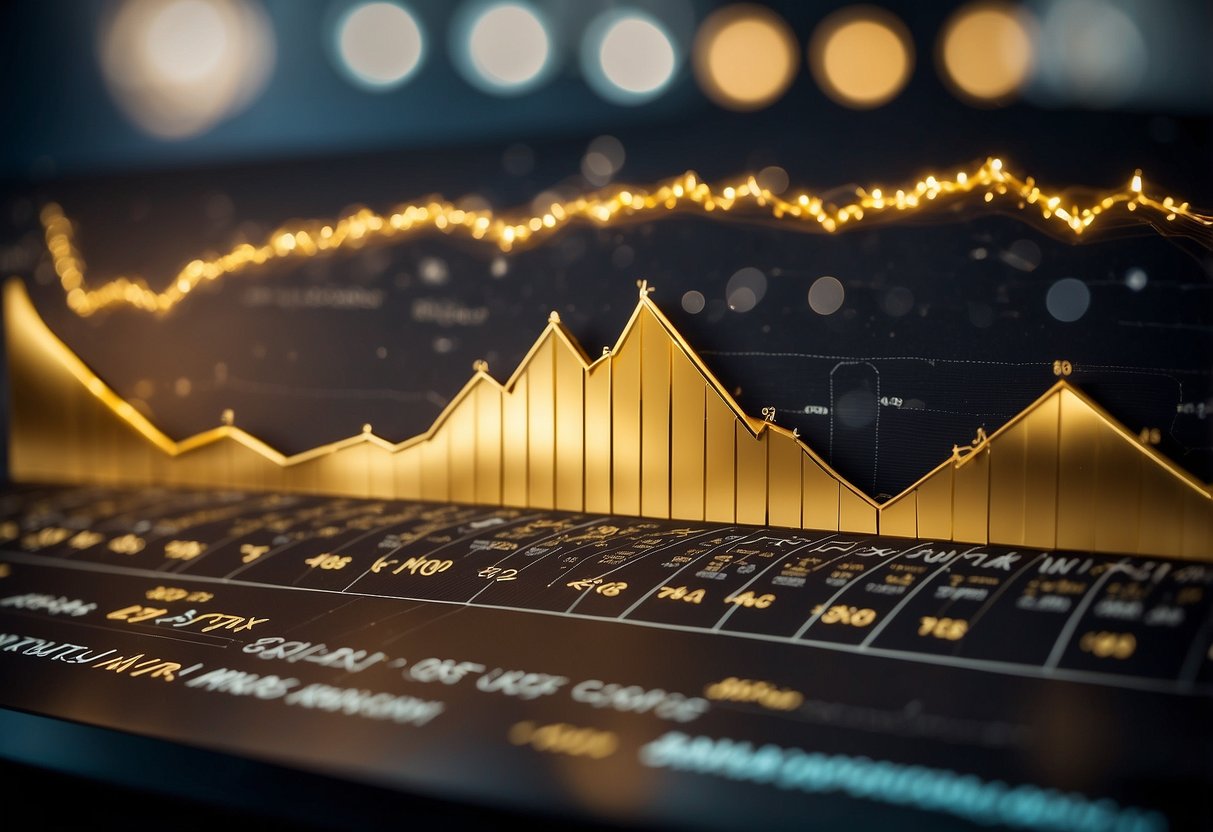
Assessing Investment Opportunities
Investors need to evaluate various economic indicators when looking into gold and silver markets. Key factors include inflation rates, interest rates, and geopolitical stability. High inflation tends to increase gold’s value as a hedge.
Analyzing historical data is essential. Past gold cycles, like those from 2001 to 2007 and 2018 to 2020, show patterns related to bear markets and recessions.
Understanding correlations between stocks and commodities helps. During stock market downturns, precious metals often rise in value. Monitoring these relationships can help investors make better decisions.
Diversification with Precious Metals
Precious metals offer a way to diversify investments. Gold and silver have different benefits. Gold is often seen as a safe-haven asset, while silver has industrial uses that can influence its price.
Allocating a portion of an investment portfolio to these metals can reduce risk. During economic instability, they tend to hold value or even appreciate.
The market cycle of gold and silver often works inversely with stocks. When stocks fall, gold and silver can provide balance. Understanding these dynamics helps investors maintain a stable and diversified portfolio.
Gold and silver investments can include physical assets like bars and coins, as well as financial instruments like ETFs and mining stocks. Each option offers different benefits and risks.
Future Trends and Predictions

Emerging Technologies and Demand
Emerging technologies are significantly affecting the demand for gold and silver. For instance, the use of silver in solar panels and electric vehicles is increasing. This is driving demand higher. Silver’s role in 5G technology is also notable. The metal is essential for high-frequency devices and infrastructure.
Similarly, gold’s use in electronics and medical devices is expanding. Gold is valued for its conductivity and resistance to corrosion. These properties make it ideal for connectors and switches in electronics.
Emerging markets, particularly in Asia, are also contributing to increased demand. A growing middle class in countries like China and India is leading to higher consumption of gold jewelry. This amplifies the demand further. As technology advances and economies grow, these trends are expected to continue.
Predictive Models by Analysts
Market analysts provide various predictions for gold and silver prices. According to InvestingHaven, silver could reach around $34.70 in 2024 and possibly up to $48 by mid-2025. Capex predicts even more bullish outcomes with silver potentially hitting around $122 by 2029.
Gold forecasts are also optimistic. J.P. Morgan estimates gold prices might average $2,500 per ounce by the end of 2024. Citigroup has also forecasted gold prices could reach up to $2,400 an ounce due to factors like Fed policy shifts and inflation concerns.
These predictions provide insights into potential market movements, aiding investors in making informed decisions.
Frequently Asked Questions
What are the indicators of an upcoming shift in gold and silver markets?
Indicators include fluctuating demand, changes in interest rates, and geopolitical events. Market sentiment and investor behavior also play roles. Watching these factors can help predict potential market movements.
How do economic downturns typically affect the price of gold compared to silver?
During economic downturns, gold often sees a rise in price as it is considered a safe-haven asset. Silver prices might be more volatile due to its industrial uses, which can decline during recessions.
What strategies should investors consider regarding gold and silver during a high ratio period?
Investors might consider buying silver when the gold-to-silver ratio is high, as silver could be undervalued. This strategy relies on the expectation that the ratio will eventually move back to historical norms.
In what ways do gold and silver prices respond to stock market volatility?
Gold typically rises during stock market volatility as investors seek safety. Silver may also increase, but its response can be more unpredictable due to its industrial demand.
How does inflation impact the investment potential of gold and silver?
Gold and silver are often seen as hedges against inflation. As the value of currency decreases, the value of these metals tends to rise, preserving purchasing power.
Can the historical performance of gold and silver predict future market trends?
Historical performance can provide insights but shouldn’t be the sole predictor. Market conditions, technological advances, and changes in investor behavior also influence future trends.






